

or many aspiring writers or published authors, the mere thought of delving into the world of electronic books invokes an uncomfortable sense of dread, a little like Dorothy in The Wonderful Wizard of Oz. Like Dorothy, anyone who is new to eBooks must venture along an unfamiliar road to find their way. But unlike the fictional realm of Oz, the road to eBook City exists on the world wide web, free from lions, tigers, bears, and other wild creatures. More user-friendly technology exists today than ever before, and it opens the gates to unlimited potential. The time has come to travel the road and explore a few wooded areas along the way--Why Bother Woods, Beneath Revenue Rainbow, and Who-Sells-What. The yellow brick road ends at the gates of eBook City on wise words from the Wonderful Wizard of Self-Publishing.
Step into Why Bother Woods
Why would anyone want to own a precious classic or modern novel in an electronic format? Why write a book and sell it in an electronic format?
Even though technology has made great strides over the years, many readers continue to reject eBooks because of the tangible and sensory details they lack. They lack crisp, worn, or aged paper. They lack the swish of pages turning beneath a reader's fingers. For classic books and stories told during a reader's childhood, they might even lack familiar place scents (from storage trunks, attics, or garages). Overall, readers might reject eBooks based on a variety of personal issues.

“...readers could increase their home and office libraries to include thousands of books.”
But many more reasons strengthen the case for eBooks. A few range from environmental to convenience issues, such as conservation, portability, and search features. Since eBooks require digital media, trees stay alive, enhancing landscapes with shade and providing our environment with more air to breathe; business travelers and vacationers can carry numerous eBooks inside handheld devices (depending upon the device and its memory capacity) that weigh less than a pound; individuals who research book-based facts, figures, quotes, and other data save time with advanced search features.
As an added plus, constantly improving eBook technology facilitates an awesome potential. Imagine the sheer potential of personal and professional libraries. Instead of owning hundreds of books, readers could increase their home and office libraries to include thousands of books. (An added bonus for the cleaning person: virtual books catch no dust.)
Yet the single most important reason for considering eBooks involves the potential to end illiteracy worldwide and improve education. Michael Hart, founder of Project Gutenberg, creates and distributes eBooks to “break down the bars of ignorance and illiteracy.” Project Gutenberg is one of the sponsors for the WorldeBook Fair, which provided free access and downloads for nearly 750,000 eBooks from July 4th to August 4th, 2007. For anyone who missed this second annual fair, access continues through the World Public Library for a nominal fee. For $8.95 per year, anyone with a computer can access all public domain eBooks and save them onto their hard drive, twenty-four hours a day, seven days a week.
The membership fee supports various global literacy programs. Readers need only download free Adobe Acrobat Reader software.
Of course, these free public domain eBooks provide zero income potential for writing and publishing professionals. But writers and others need not search “somewhere over the rainbow” to discover sales potential; they need only journey ahead into the next rainbow-covered forest.
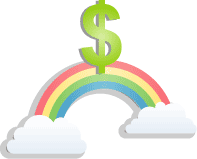
“No matter what nay-sayers say, these numbers reveal positive changes.”
Beneath Revenue Rainbow
Beyond free eBooks available for public education, use, and enjoyment, where do current eBook sales figures stand? Are sales increasing? What does the future hold?
For April 2007, the Association of American Publishers (AAP) reported that “E-book sales rose by 13.8 percent for the month ($2.5 million)”; and “the category also posted an increase of 14.2 percent for the year.” In addition, The International Digital Publishing Forum (IDPF) collects quarterly data in conjunction with AAP. The IDPF is a “trade and standards organization dedicated to the development and promotion of electronic publishing.”
For the first quarter of 2006, sales totaled $4,100,000, yet by the end of the first quarter in 2007, sales climbed to $7,500,000. Even for non-numbers experts, the IDPF's industry statistics chart reveals that the sales figures for eBooks in the U.S. have been on a rising curve from 2002 through 2007, with only a few dips. No matter what nay-sayers say, these numbers reveal positive changes. In addition, these figures stem only from 12-15 trade publishers. They don't account for all the profit-making markets.
These figures exclude educational and library markets, for example, which could be significant. In June 2007, The Associated Press reported that “IDBF executive director Nick Bogaty said he had no statistics for the educational and library market, but believed the numbers were at least triple those for commercial releases.” For writers who hold interest in the education and library markets, Bogaty's words color a true rainbow of opportunity. (For writers looking into these markets, refer back to last month's How 2 Tap into the Lucrative Library Market by Patricia Fry.)
“...it's only a matter of time before the revenues move beyond industry projections.”
During the May 2007 Book Expo America (BEA), Bogaty gave a presentation entitled, “Digital Books: Why this time it's for real.” In his presentation he provided current trade revenues and encouraging facts. Bogaty forecasted that trade eBook revenues will reach 30 million dollars overall in 2007. Plus he looked beyond the U.S. and cited that in Japan “$82M eBook[s] trade[d] on cellphones in 2006 in only five years”; and, in Korea, the figures moved to “$150M in 2006 from $59M in 2005.” Worldwide eBook purchases magnify sales potential. Although eBooks might sell for 20% less than their print counterparts, for example, they sell to a much larger crowd at any given shopping moment online--the globe. The same can't be said for print books sold online because shipping costs need to be added into the equation. Print books can also be returned, unlike eBooks.
One final market, Penguin Group (USA), boasts continual growth. In their February 2007 Press Release, they reported for 2006 that “eBook sales through third party retailers were up 17 percent year-over-year.” With numerous publishers of all sizes becoming increasingly involved in eBooks, it's only a matter of time before the revenues move beyond industry projections.
(Dorothy's aside: “Toto, we're not in the backwoods of eBook technology anymore.”)
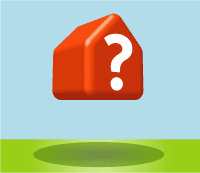
“Romance is a Fast Growing Genre in eBooks.”
Who-Sells-What
Who sells eBooks? What are the most popular markets? What types of eBooks sit on cyber shelves?
As sales increase, so does the variety of eBook titles on the market. Brent Lewis from Harlequin gave a presentation at the BEA in May 2007, entitled “Mobile Devices and eReading Software.” Lewis stated that “Romance is a Fast Growing Genre in eBooks.” He further cited that the Harlequin eBook Program launched nine titles per month in October 2005 and ninety titles in May 2007. He quoted a Harlequin reader, “I like being able to carry an entire library in my purse.” No one can downplay that perk. In our neighboring country, Malle Vallik, Director of Digital Content & Interactivity for Harlequin, gave a similar presentation at the BookNet Canada Speaker Series 2007 in June. With all these presentations highlighting positive changes, publishers add on to their programs.
Harlequin added more perks to their eBook Program. eHarlequin readers who subscribe to Verizon mobile phones can add on a new service called “Harlequin On the Go”; for $2.49 per month (plus airtime) readers receive their favorite serialized novels. At eHarlequin's eBook Boutique, readers find various series available: “Luna,” “Red Dress Ink,” “Steeple Hill,” “MIRA Books,” and this covers only a few. A total of ten categories grace the tabs atop their front page with numerous subcategories beneath many of them. Harlequin doesn't publish every book in eBook format, yet a large number are available. Since women constitute a large part of the Romance market, the available eBooks continue to grow at a rapid rate.
(Incidentally, for readers who want to write for eHarlequin, access their guidelines and get started.)
The mobile phone market holds significant sales potential from the sheer numbers involved. CTIA-The Wireless Association conducted research and reported over 233 million mobile phone subscribers in the U.S. by the end of 2006. Out of these numbers, Verizon reported 60.7 million U.S. subscribers for 2006, which means they account for more than one-fourth the total U.S. subscriber base. For one mobile market, this is substantial.
“...half the fun comes from searching for that next enthralling read, and eBook websites facilitate searches by a few clicks.”
Beyond Verizon's mobile phone service for Romance novels and Harlequin's authors, many more eBook reading devices and genres exist. Name any author on the market, and it's possible his or her works sit on the cyber shelves at online book sellers next to their print counterparts. Open the virtual door to Mobipocket, Amazon's subsidiary for eBooks, and readers see these authors and their works: John Sandford's, Invisible Prey; Michael Connelly's, The Overlook; a biography of Hillary Clinton, five Dean Koontz books, and many more.
At Mobipocket shoppers can find various works from authors A through Z. If you search for Angelou or Zane, for instance, both will appear on screen with their respective works. The authors vary as much as the genres. Mobipocket sells eBooks in more than 70 categories, much like print booksellers. They include general fiction, nonfiction, juvenile fiction, mystery and crime, for a small sample.
If buyers browse HarperCollins eBooks, though, they'll find a completely different display of titles gracing the front page. Of course, half the fun comes from searching for that next enthralling read, and eBook websites facilitate searches by a few clicks. Some sellers are fairly new while others have been around for years. The Penguin Group in the UK launched its eBooks section, ePenguin, in August 2001.
Similar to print booksellers, eBook sellers vary in size and the number of eBooks they carry. For instance, eReader advertises over 17,000 eBook titles available; Fictionwise announces “over three hundred thousand members” and they sell “more than 40,000 eBooks per month”; and, eBookMall publicizes over 150,000 eBooks. Although they vary in size and display different titles on their front pages, all of them carry the best sellers.
The most popular eBooks and their sales prices appear on the latest industry list: IDPF 2005 eBook Bestseller List. The top three spots list: Star Wars: Episode III the Revenge of the Sith, by George Lucas; The Da Vinci Code and Angels & Demons, both by Dan Brown. Other bestsellers on the list include The Year Ahead 2005, by Susan Miller; Winterfair Gifts by Lois McMaster Bujold; Punished by Kimberly Zant. Reference books also appear, like Merriam-Webster's Collegiate Dictionary, Eleventh Edition. The sales prices for these eBooks ranged from $25.95 (for the dictionary) to $2.49 (Winterfair Gifts), with numerous prices in between.
The IDPF derived their bestseller list from aggregate sales figures between eReader, Fictionwise, and OverDrive (a company that helps libraries setup eBook loan systems and delivers digital content for industry leaders).
Of course, for a current sampling of today's bestsellers, interested readers need only click to any eBook retailer mentioned, find their respective Bestsellers Lists, and view the variety of works available, the price range, and even sample part of an eBook before purchasing. At Mobipocket readers can sample a couple of novels in a matter of minutes, such as Rhonda Byrne's The Secret and Nora Roberts' High Noon. Readers can sample any eBook and the only limitation exists on the number of pages that can be viewed within each one. It's important to note that readers won't find all the latest print books available in eBook format along cyber shelves, at least not yet. J.K. Rowling's Harry Potter books, for instance, and other recent bestsellers won't appear. They will appear in the future, though, like many of Stephen King's, and other popular authors' works.
Current technology facilitates finding eBooks as well as reading them. Reading depends upon a reader's preferred hardware devices, from personal computers to numerous handheld ones.
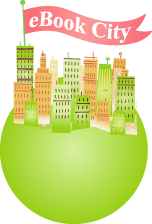
“Before getting started, Poynter advises writers have a completely prepared, publishable manuscript.”
At the Gates of eBook City
At the end of the yellow brick road, travelers must stop at the gates to figure out where to go next. For aspiring eBook writers, what devices are needed? For aspiring eBook authors what comes next? Who is the Wonderful Wizard of Self-Publishing? How can he help?
Many eBooks are available in a variety of electronic formats. But the most popular formats are Adobe Reader PDFs, Mobipocket PRCs, Microsoft Reader LITs, and Palm Reader PDBs. PCs, laptops, and handheld devices read overlapping and distinct formats. Since technology changes so rapidly, anyone looking to read eBooks needs to check for answers to frequently asked questions from their chosen eBook sellers.
All reputable eBook seller websites provide answers to compatibility questions and software downloads, whether readers choose to use their computers and laptops or handheld reading devices. For example, Mobipocket provides software downloads for various platforms, including PC, Palm OS, Windows Mobile, Symbian OS, and Blackberry; eHarlequin eBook Boutique provides Adobe Reader for the PC or laptop, Microsoft Reader for PCs, laptops, and pocket PCs, and the Mobipocket reader. For Harlequin on the Go through Verizon mobile phones, a separate page provides details.
eBookMall lists downloads for Microsoft Reader, Adobe, Mobipocket, and Palm OS. Every eBook seller mentioned provides the necessary software downloads for free.
On the other side of eBooks, authors and publishers wishing to create must seek advice from the Wonderful Wizard of Self-Publishing, Dan Poynter. Unlike the fictional Wizard of Oz, Poynter blows no hot air and never stands behind a curtain; he teaches the facts only and doles out the specifics to anyone willing to learn. For serious writers interested in creating an eBook, Poynter provides a twelve page document, “pBooks to eBooks: Creating Digital Reading,” which can be purchased from his website at Para Publishing in either eDocument or print format. His document contains invaluable sources and guidelines.
Inside its pages, Poynter guides authors and publishers through a step-by-step process. In the interest of fairness, only a few general thought-provoking tips from his document will be provided, to whet appetites outside the gates of eBook City.
“We will survive the microchip as well.”
Before getting started, Poynter advises writers have a completely prepared, publishable manuscript. Writers need a quality work ready before converting it to an eBook format. The manuscript serves as a writer's foundation. He believes that “an ink-on-paper book still provides more credibility and revenue than any other version.” But “one additional edition of the Work is the eBook.” In addition, the layout of the eBook follows from the pBook. “Each should mirror the other.” In contrast, Poynter states that “some people are offering 20-page eDocuments on the web and calling them ‘eBooks.’ They are not books.” An eBook holds the same definition as a pBook, except that it's presented in a digital format.
Poynter also addresses the issue of security, since digital media can be easy to copy. He mentions that “Authors and publishers want to make sure they are getting paid for each copy that is distributed.” Prospective eBook authors need to ask about encryption systems that are available relative to the formats they choose to use. This might sound like a figurative “beast in the forest” to deal with, but it goes with the territory. Poynter mentions that publishers survived the age of the photocopy machine, when many feared that “everyone would copy our books.” In a similar way, he says that “we will survive the microchip as well.”
For more tips and specific lessons from Poynter, purchase his document. For other questions, he encourages contact at 1-800-PARAPUB or DanPoynter@ParaPublishing.com. (Using a wizard's advice always helps.)
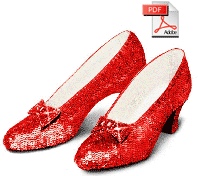
“With each step forward, authors and publishers unlock an ever-rising market of technology.”
Returning Home
Even though digital technology invokes anxiety for some individuals, the numerous user-friendly sites, software, and sales facts and future potential provide reassurance. Unlike Dorothy's yellow brick road, the one to eBook City exists on real cords, wires, cables, software programs, and ever-advancing hardware devices. With each step forward, authors and publishers unlock an ever-rising market of technology. What writers and publishers expect to happen today, tomorrow, or next year may change, but with more knowledge everyone will be ready to adapt.
Why not consider writing an eBook and riding the rainbow of technology?
-------------
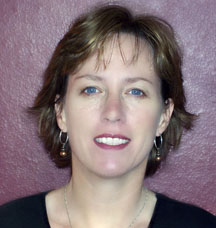
Bio:
Sue Donckels is an Editor for WOW! Women On Writing, and a recent graduate from two Long Ridge Writers Group programs: Breaking into Print and Writing for Children and Teenagers. Sue's next goal is to complete the novel course and work closely with her instructor, Pegi Deitz Shea, on a nonfiction novel slated for middle grader to young adult readers.